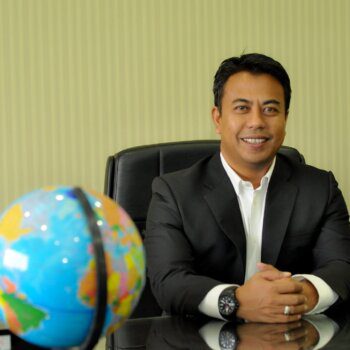Key Takeaway
Dr. David Sinclair, a professor of genetics and co-director of the Paul F. Glenn Center for Biology of Aging Research at Harvard, has discovered a biological clock that can accelerate and reverse the aging process. The study, which has been the product of 13 years of research, disrupts our scientific understanding of aging. The prevailing theory suggests that aging is caused by mutations, but this theory is not accurate. Sinclair and his team focused on the epigenome, which tells cells where, when, and what to do. By manipulating the epigenome, they were able to accelerate aging in mice and reverse it, rejuvenating them and returning biological markers of youth.
From the depths of human innovation have surfaced a variety of new methods that bring us one step closer to that long sought-after fountain of youth. Incredible milestones are being achieved in the field of age reversal and life-extension technology so that even now there may be the lucky first that will live to 150 years or more — an unfathomable number to our primitive predecessors whose idea of a long life was 30 or 40 years old. A century from now perhaps even 150 years will seem too little, and a man that dies at 109 years of age will be said to have died “young, and still in the prime of his life”.
So what are these important milestones and who are the people responsible for them?
Dr. David Sinclair, a professor of genetics and co-director of the Paul F. Glenn Center for Biology of Aging Research at Harvard, released a study earlier this year detailing a newly-discovered biological clock than can both accelerate and reverse the aging process. The study itself has been the product of 13 years of research, and has disrupted our scientific understanding of aging.
The prevailing theory in the scientific community is that aging is caused primarily by mutations. The more a cell multiplies over a lifetime, the more mutations can accumulate and the more these mutations can interfere with normal cell function, eventually spelling death for the cell. However, if this was the case then one would expect to see an accumulation of mutations in the cells of older people. Not only are these accumulations missing, but neither humans nor animals with high rates of mutations show premature aging. So if mutations don’t seem to be responsible for aging, then what is?
Sinclair and his team decided to focus on the epigenome, a variety of chemical compounds that tell DNA where, when, and what to do. Epigenetic marks vary from cell to cell. It is this epigenome which tells cells to turn into skin cells or blood cells or brain cells, allowing for cell specialization throughout the body. Thus by interacting with the epigenome the cells end up with different structures and jobs. Genes are turned on and off at the epigenome’s behest.
The team used this understanding to both accelerate aging in mice and also reverse this aging, rejuvenating the mice and returning to them biological markers of youth. The fact that manipulating the epigenome could both trigger and reverse aging presents a strong case: it’s not a buildup of mutations that’s responsible for senescence, but rather errors in the genetic instructions coming from the epigenome. This is encompassed by the Information Theory of Aging which says that information critical to the cell becomes lost or corrupted over time, leading to aging. It is primarily this loss of information in cells that turns a healthy 30-year-old into a geriatric patient.
Dr. Sinclair compares this to the snags in software that cause a computer to run slowly or not-at-all. By rebooting the system, many of these issues are solved. This is very hopeful news. The epigenetic information crucial to the cell still exists, but the system needs to “reboot” in order to make it accessible once more. Our youth has a backup copy, we just need to trigger it to replay.
“We believe it’s a loss of information – a loss in the cell’s ability to read its original DNA so it forgets how to function – in much the same way an old computer may develop corrupted software. I call it the Information Theory of Aging.” Dr. David Sinclair
The team has already been able to create a biological reboot in mice, first by creating DNA breaks via the process of ICE – Inducible Changes to the Epigenome. ICE changes the folding of DNA. These DNA breaks, or “cuts”, caused clear signs of aging after just a few weeks, including a lowered body weight, gray fur, increased delicacy, and a lower level of activity. This is because ICE was meant to mimic the damage caused by radiation, chemicals, stress, and so on.
So the mice were aging twice as fast. Now it was time to reboot.
This part of the process involved a gene therapy focusing on three specific genes that instruct the cell to reprogram itself. These instructions influence the cells to restart the epigenetic process of specialization — the process that tells cells whether they’ll be part of the muscles, skin, organs, etc. The genes weren’t just any random genes either, they were 3 of 4 Yamanaka stem cell factors discovered 17 years ago by Nobel scientist Shinya Yamanaka. These stem cell factors can reverse adult cells into a more pliable, embryonic state. Once returned to stem cells they go on to develop and specialize just as they did when they were first created. This doesn’t completely erase the cell’s history, but it does reset the epigenetic instructions. Overall the biological clock was turned back 57%.
It’s not about wiping the cells’ histories entirely or about remaking them into stem cells, it’s about helping them regain their identity. Reversing 100% of the cell’s history could lead to cancer or other diseases so, while the team doesn’t exactly understand why the cell only reverses between 50–75%, it’s very fortunate for us that it does. Up until this point the process has worked with every kind of cell.
Sinclair was even able to restore sight in older mice and anticipates that sight restoration will be one of the first human trials. This restoration can be accomplished by injecting the gene therapy into the eye area. There is no need, as some might think, to completely regrow new nerves. The cells are there; we just need to reboot them. Heart disease and dementia, among others, might also be treated using gene therapy since the mice were also able to grow healthy muscle, kidney tissue, and younger brains full of cognitive possibilities.
The team has now moved on to testing the therapy on primates and on human neurons, fibroblast, and skin cells.
The main problem to tackle moving forward is to spur this rejuvenation process across the entire body and not just in one specific area. There are already two unpublished studies which have been able to overcome the problem, and Sinclair is optimistic the technical hurdle can be solved. The studies have shown that mice life expectancies can be increased, giving us hope that human lives may reap the same benefits. The fact that the mice’s lifespans increased is a sign that the animals are experiencing all-over rejuvenation.
Despite how promising the gene therapy has been in the lab, it will likely be decades before clinical trials can begin in humans and can be safely scaled and available to everyone. The great news is that if it takes 30 years to succeed, you might just be able to get all 30 of those years back.
The true milestone is in simply knowing that age reversal is possible. Now we need to perfect our methodology.





























